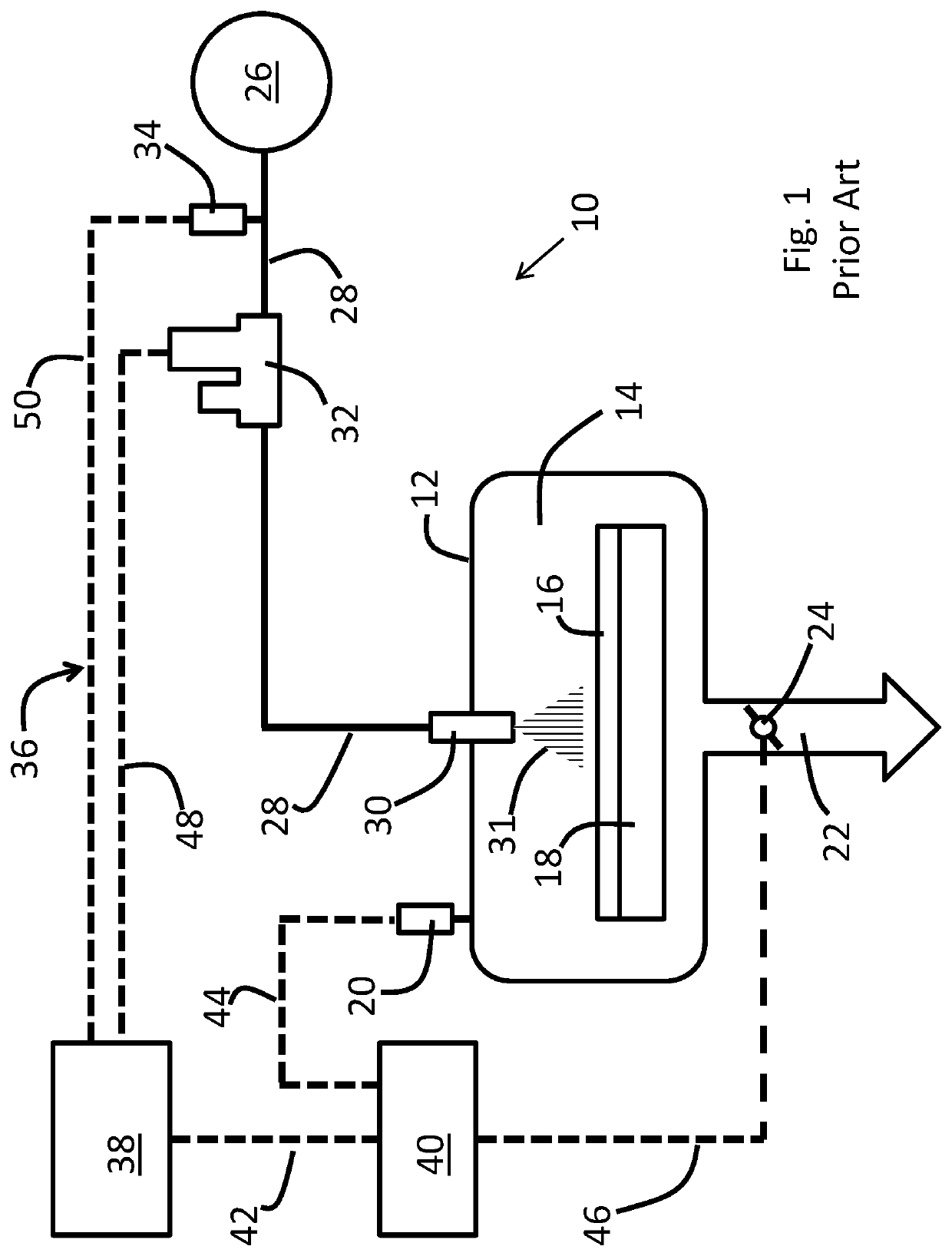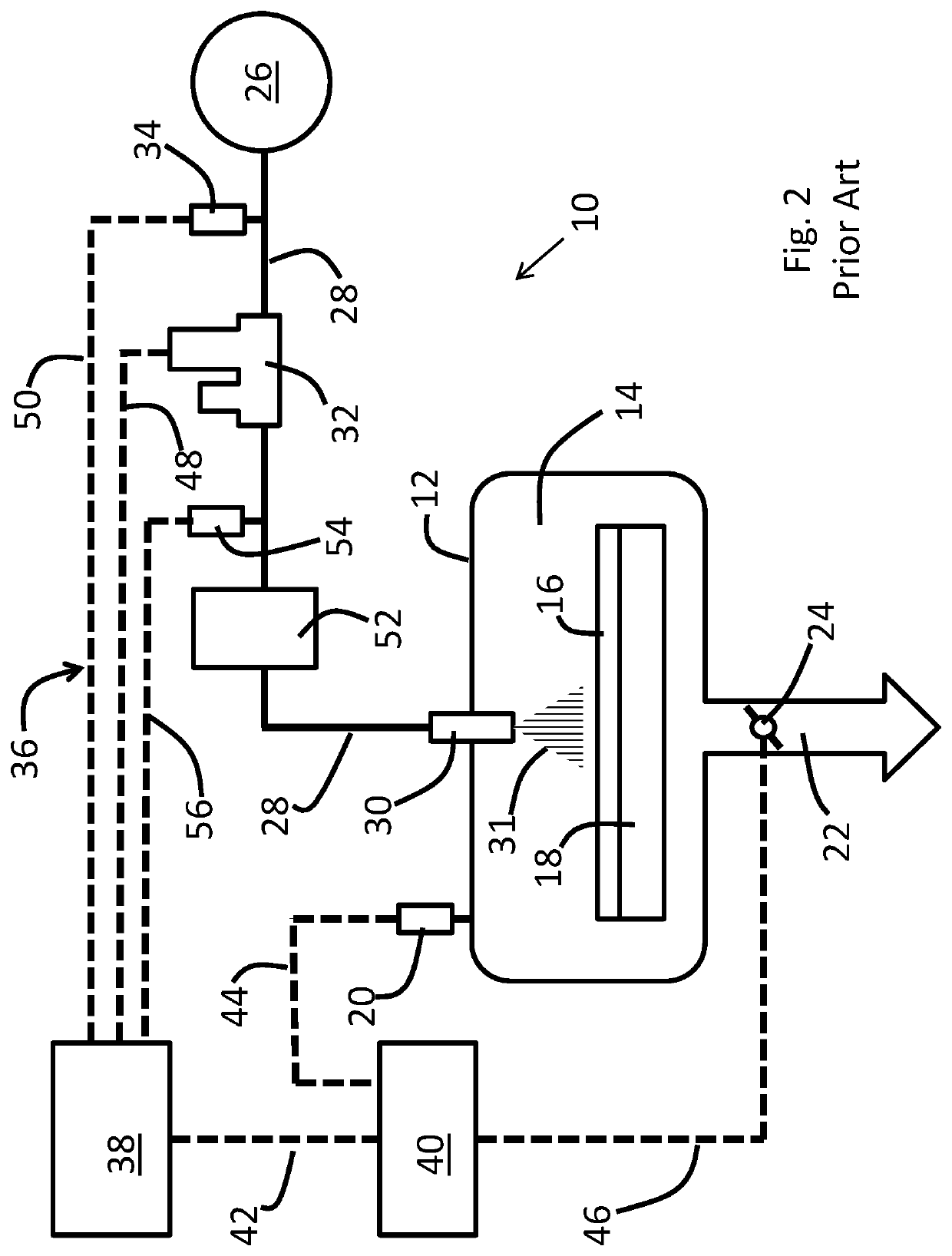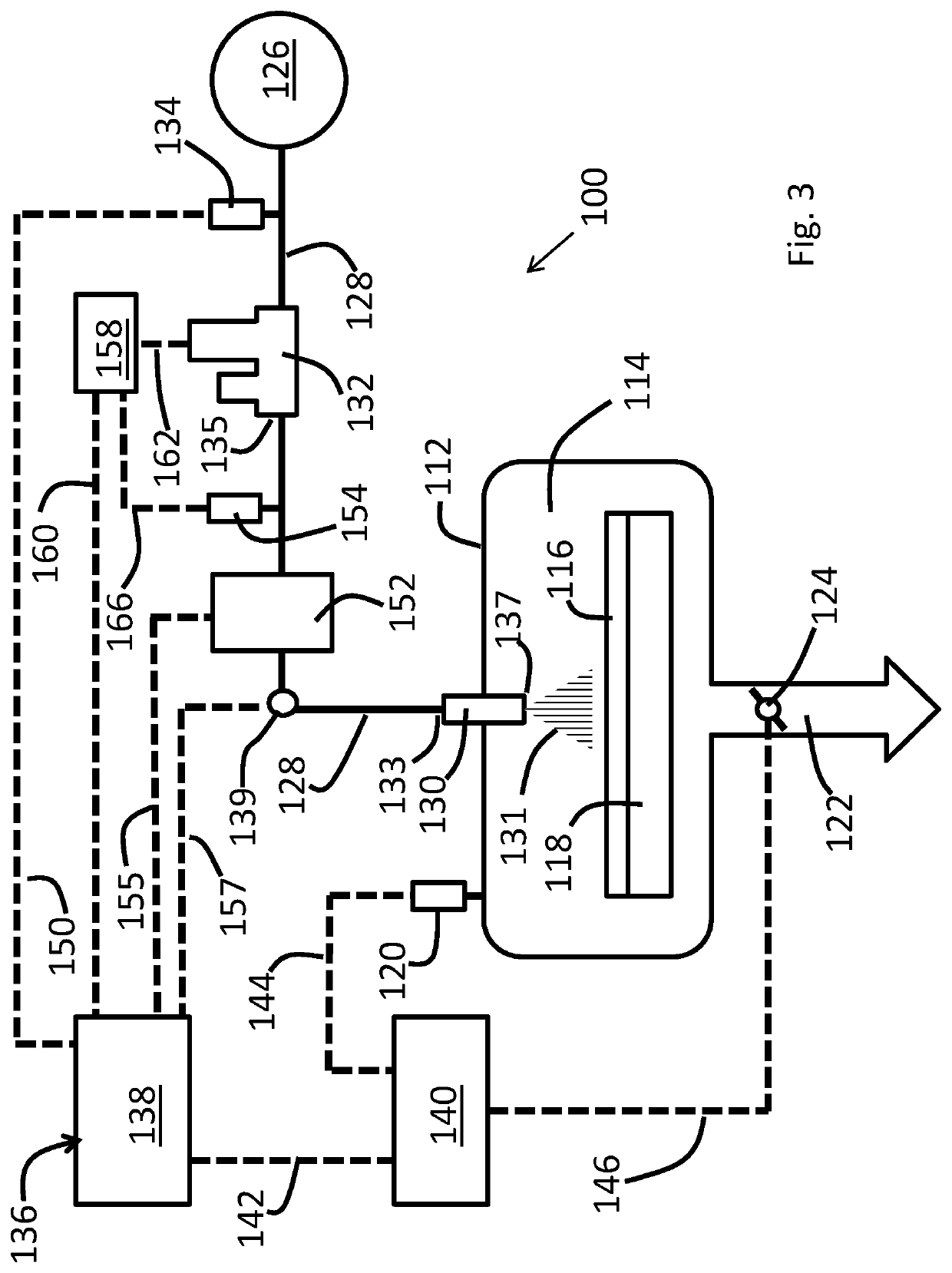Pressure control strategies to provide uniform treatment streams in the manufacture of microelectronic devices
a technology of microelectronic devices and treatment streams, applied in the direction of cleaning processes and utensils, cleaning process and utensils, chemistry apparatus and processes, etc., can solve the problems of inability to achieve chamber matching in practice, process performance and results may still be less uniform than might be desired, and the process performance and results may not be uniform enough to achieve the effect of being uniform, accurate control of process performance, and changing process performan
- Summary
- Abstract
- Description
- Claims
- Application Information
AI Technical Summary
Benefits of technology
Problems solved by technology
Method used
Image
Examples
Embodiment Construction
[0049]Methods for selectively removing objects from a microelectronic substrate are described in various embodiments. One skilled in the relevant art will recognize that the various embodiments may be practiced without one or more of the specific details, or with other replacement and / or additional methods, materials, or components. In other instances, well-known structures, materials, or operations are not shown or described in detail to avoid obscuring aspects of various embodiments of the disclosure. Similarly, for purposes of explanation, specific numbers, materials, and configurations are set forth to provide a thorough understanding of the systems and method. Nevertheless, the systems and methods may be practiced without specific details. Furthermore, it is understood that the various embodiments shown in the figures are illustrative representations and are not necessarily drawn to scale.
[0050]Reference throughout this specification to “one embodiment” or “an embodiment” means...
PUM
 Login to View More
Login to View More Abstract
Description
Claims
Application Information
 Login to View More
Login to View More - R&D
- Intellectual Property
- Life Sciences
- Materials
- Tech Scout
- Unparalleled Data Quality
- Higher Quality Content
- 60% Fewer Hallucinations
Browse by: Latest US Patents, China's latest patents, Technical Efficacy Thesaurus, Application Domain, Technology Topic, Popular Technical Reports.
© 2025 PatSnap. All rights reserved.Legal|Privacy policy|Modern Slavery Act Transparency Statement|Sitemap|About US| Contact US: help@patsnap.com



